
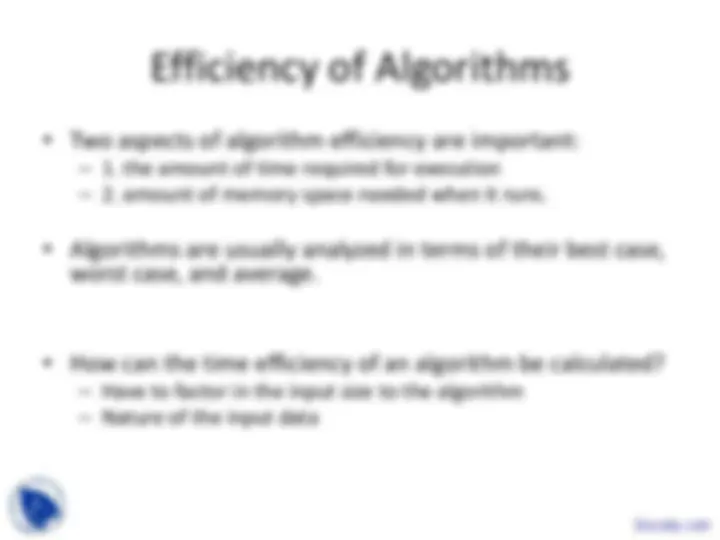
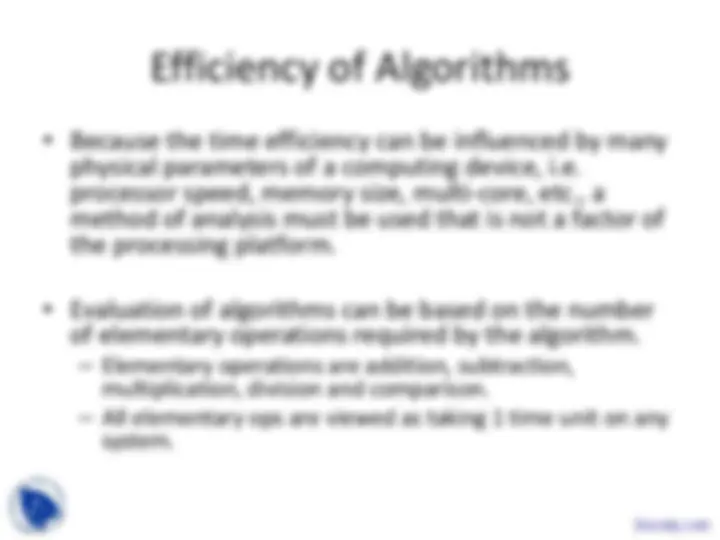
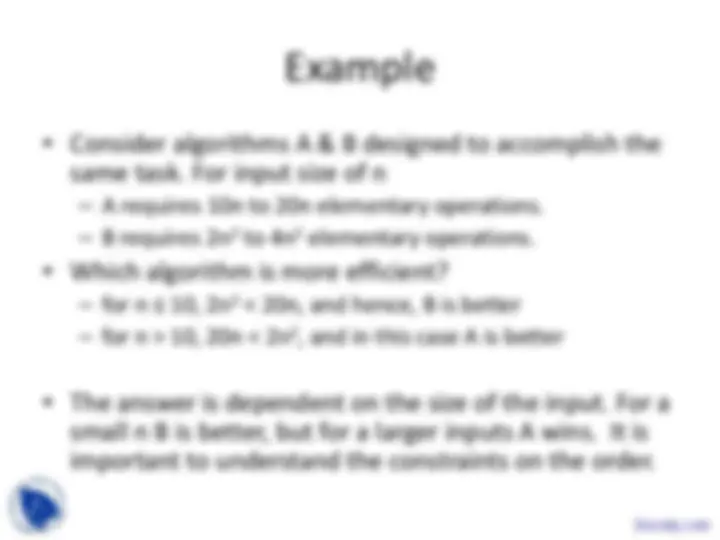
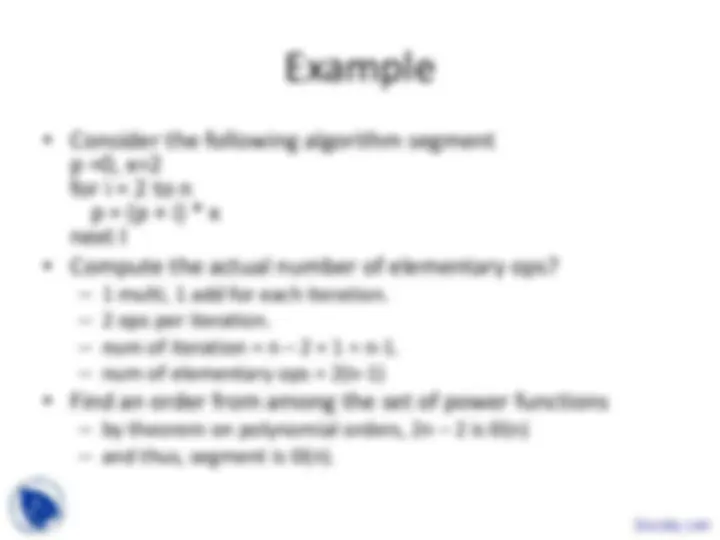
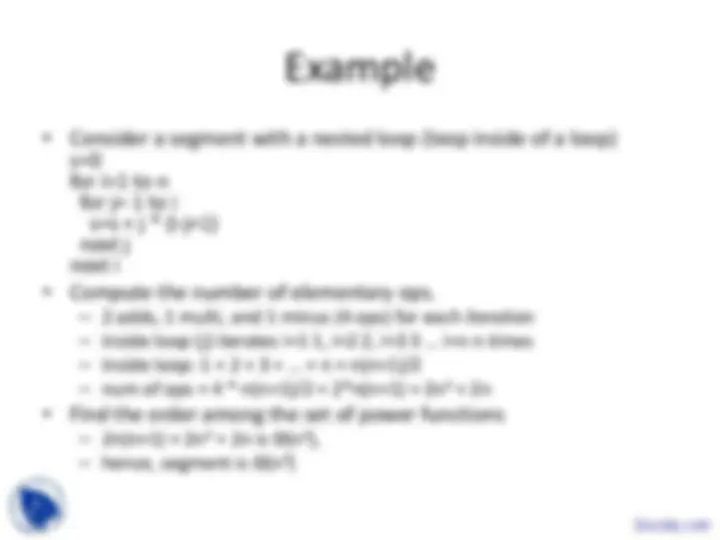
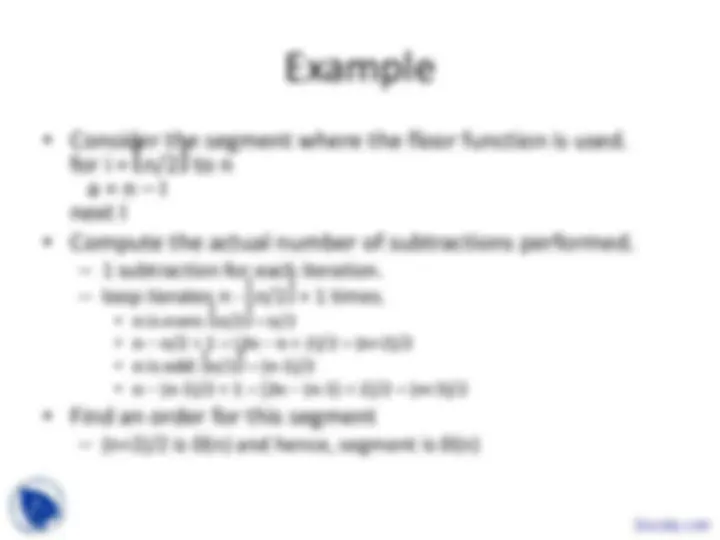


Study with the several resources on Docsity

Earn points by helping other students or get them with a premium plan


Prepare for your exams
Study with the several resources on Docsity

Earn points to download
Earn points by helping other students or get them with a premium plan
Community
Ask the community for help and clear up your study doubts
Discover the best universities in your country according to Docsity users
Free resources
Download our free guides on studying techniques, anxiety management strategies, and thesis advice from Docsity tutors
During the study of discrete mathematics, I found this course very informative and applicable.The main points in these lecture slides are:Aspects of Algorithm Efficiency, Efficiency of Algorithms, Time Efficiency, Nature of Input Data, Memory Space, Evaluation of Algorithms, Elementary Operations, Comparisons of Algorithm Orders, Algorithm Segment
Typology: Slides
1 / 12

This page cannot be seen from the preview
Don't miss anything!







physical parameters of a computing device, i.e. processor speed, memory size, multi-core, etc., a method of analysis must be used that is not a factor of the processing platform.
of elementary operations required by the algorithm.
same task. For input size of n
small n B is better, but for a larger inputs A wins. It is important to understand the constraints on the order.
Time Comparisons of Algorithm Orders